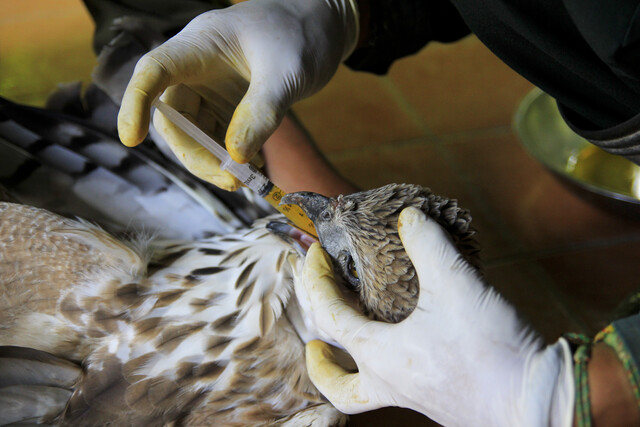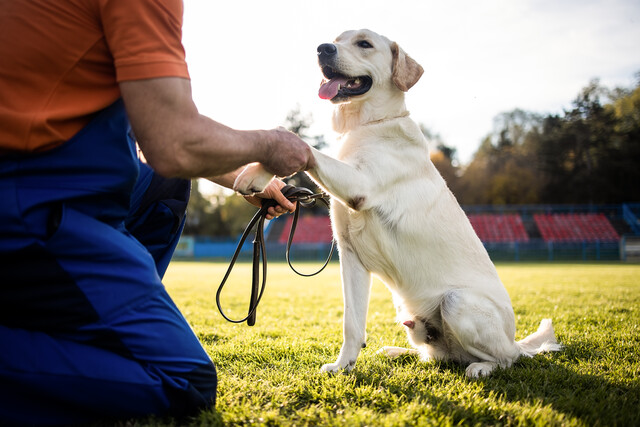Online Class: Horseback Riding 101
We're sorry, this course is no longer open for enrollment.
-
12Lessons
-
14Exams &
Assignments -
4Hours
average time -
0.4CEUs
Course Description
While it's impossible to describe the exhilaration and connections to yourself and to nature you will experience while riding a horse, be assured that nothing else you ever do will be quite like it. That may not seem true the day after your first ride, when you will probably have some aches and pains from muscles you don't use often and may feel like your legs have forever become an "O" shape, or when you are learning to ride the trot, which is a big challenge for most of us, but those kinds of problems will disappear quickly as you learn and love to ride.
You'll also love horses themselves. They are friendly, gentle animals and companions – and enjoyable riding requires that you and your horse, or a stable horse you may ride, work together. Since horses are herding animals in the wild, they enjoy having at least one other horse companion, and will take you into their herd, too. You'll like that!
- Completely Online
- Self-Paced
- Printable Lessons
- Full HD Video

- 6 Months to Complete
- 24/7 Availability
- Start Anytime
- PC & Mac Compatible
- Android & iOS Friendly
- Accredited CEUs

Course Lessons
Lesson 1: Building Bonds: Horses and Humans
 Lesson 1 Video
Lesson 1 Video Review Practice Worksheet: Lesson-1-WordSearch-7942.pdf
Review Practice Worksheet: Lesson-1-WordSearch-7942.pdf Lesson discussions: Reasons for Taking this Course
Lesson discussions: Reasons for Taking this Course Complete Assignment: Introduce Yourself
Complete Assignment: Introduce Yourself Assessment: Lesson 1 The Joys of Riding
Assessment: Lesson 1 The Joys of Riding
Lesson 2: Navigating the World of Western vs. English Riding Styles
 Lesson 2 Video
Lesson 2 Video Review Practice Worksheet: Lesson-2-WordSearch-7944.pdf
Review Practice Worksheet: Lesson-2-WordSearch-7944.pdf Assessment: Lesson 2 Why Take Lessons and Basic Horse Sense
Assessment: Lesson 2 Why Take Lessons and Basic Horse Sense
Lesson 3: Choosing the Perfect Riding Instructor: A Comprehensive Guide
 Lesson 3 Video
Lesson 3 Video Review Practice Worksheet: Lesson-3-WordSearch-7946.pdf
Review Practice Worksheet: Lesson-3-WordSearch-7946.pdf Assessment: Lesson 3 Finding a Good Instructor for Lessons
Assessment: Lesson 3 Finding a Good Instructor for Lessons
Lesson 4: The Essentials of Buying and Caring for Your Horse
 Lesson 4 Video
Lesson 4 Video Review Practice Worksheet: Lesson-4-WordSearch-7948.pdf
Review Practice Worksheet: Lesson-4-WordSearch-7948.pdf Assessment: Lesson 4 Should you Buy? Finding a Trainer and Vet, Buying Your Horse
Assessment: Lesson 4 Should you Buy? Finding a Trainer and Vet, Buying Your Horse
Lesson 5: From Nomadic Roots to Modern Rides: The Evolution of Horse Breeds
 Lesson 5 Video
Lesson 5 Video Review Practice Worksheet: Lesson-5-WordSearch-7950.pdf
Review Practice Worksheet: Lesson-5-WordSearch-7950.pdf Assessment: Lesson 5 Horse History and Breeds, Choosing a Breed and Riding Style
Assessment: Lesson 5 Horse History and Breeds, Choosing a Breed and Riding Style
Lesson 6: Boarding Insights: Creating a Safe and Nurturing Environment for Horses
 Lesson 6 Video
Lesson 6 Video Review Practice Worksheet: Lesson-6-WordSearch-7952.pdf
Review Practice Worksheet: Lesson-6-WordSearch-7952.pdf Assessment: Lesson 6 Horse Habitats, Food and Grooming
Assessment: Lesson 6 Horse Habitats, Food and Grooming
Lesson 7: Understanding Halters and Bridles in Horse Riding
 Lesson 7 Video
Lesson 7 Video Review Practice Worksheet: Lesson-7-WordSearch-7954.pdf
Review Practice Worksheet: Lesson-7-WordSearch-7954.pdf Assessment: Lesson 7 Horse Tack: Halters and Leads, Bridle or Hackamores
Assessment: Lesson 7 Horse Tack: Halters and Leads, Bridle or Hackamores
Lesson 8: Understanding Saddles: Design, Fit, and Materials
 Lesson 8 Video
Lesson 8 Video Review Practice Worksheet: Lesson-8-WordSearch-7956.pdf
Review Practice Worksheet: Lesson-8-WordSearch-7956.pdf Assessment: Lesson 8 Saddles and Other Tack
Assessment: Lesson 8 Saddles and Other Tack
Lesson 9: Equestrian Essentials: Back to Basics
 Lesson 9 Video
Lesson 9 Video Review Practice Worksheet: Lesson-9-WordSearch-7958.pdf
Review Practice Worksheet: Lesson-9-WordSearch-7958.pdf Assessment: Lesson 9 Horse Talk and Reviewing the Basics
Assessment: Lesson 9 Horse Talk and Reviewing the Basics
Lesson 10: Ensuring the Longevity and Vitality of Your Horse: A Comprehensive Guide
 Lesson 10 Video
Lesson 10 Video Review Practice Worksheet: Lesson-10-WordSearch-7960.pdf
Review Practice Worksheet: Lesson-10-WordSearch-7960.pdf Assessment: Lesson 10 Keeping Your Horse Healthy and Happy
Assessment: Lesson 10 Keeping Your Horse Healthy and Happy
Lesson 11: The Intricacies of Trotting and Cantering
 Lesson 11 Video
Lesson 11 Video Review Practice Worksheet: Lesson-11-WordSearch-7962.pdf
Review Practice Worksheet: Lesson-11-WordSearch-7962.pdf Assessment: Lesson 11 Medium and Advanced Skills Progress
Assessment: Lesson 11 Medium and Advanced Skills Progress
Lesson 12: Saddle Up: A Beginner's Guide to Horse Sports and Vacations
 Lesson 12 Video
Lesson 12 Video Review Practice Worksheet: Lesson-12-WordSearch-7964.pdf
Review Practice Worksheet: Lesson-12-WordSearch-7964.pdf Lesson discussions: End of Course Poll; Course Comments
Lesson discussions: End of Course Poll; Course Comments Assessment: Lesson 12 Horseback Vacations, Camps, Showing, Racing and Performing
Assessment: Lesson 12 Horseback Vacations, Camps, Showing, Racing and Performing Assessment: The Final Exam
Assessment: The Final Exam
Learning Outcomes
- Describe the physical and emotional benefits of horseback riding, including improved core strength, calorie burning, balance, and emotional connection.
- Identify safety precautions necessary for horseback riding, such as wearing helmets, understanding spooked behavior, and the importance of riding with experienced individuals or adults.
- Define the differences between Western and English style horse riding, including saddle types and riding purposes, with 90% accuracy during a quiz.
- Demonstrate the correct approach to a horse by following safety guidelines and receiving positive feedback from an instructor in a controlled setting.
- Demonstrate the ability to identify qualified riding instructors through research and evaluation of credentials and teaching methods.
- Identify and describe the necessary gear and preparation activities required for beginning horse riding lessons.
- Describe the financial and time commitments involved in owning and caring for a horse, including purchase and maintenance costs.
- Identify the key criteria and process for selecting a suitable horse, including health checks, trainer, and vet recommendations.
- Demonstrate the ability to identify different horse breeds and describe their specific characteristics and historical significance within American culture.
- Recognize various riding styles suitable for different horse breeds and evaluate their appropriateness based on horse temperament and physical attributes.
- Define the essential characteristics and amenities of a high-quality horse boarding stable, including staff competence and care standards.
- Demonstrate proper grooming techniques, including hoof care, to ensure a horse's cleanliness and well-being.
- Identify the nutritional requirements and suitable dietary supplements for maintaining a horse's health and energy.
- Demonstrate mastery of lesson content at levels of 70% or higher.





